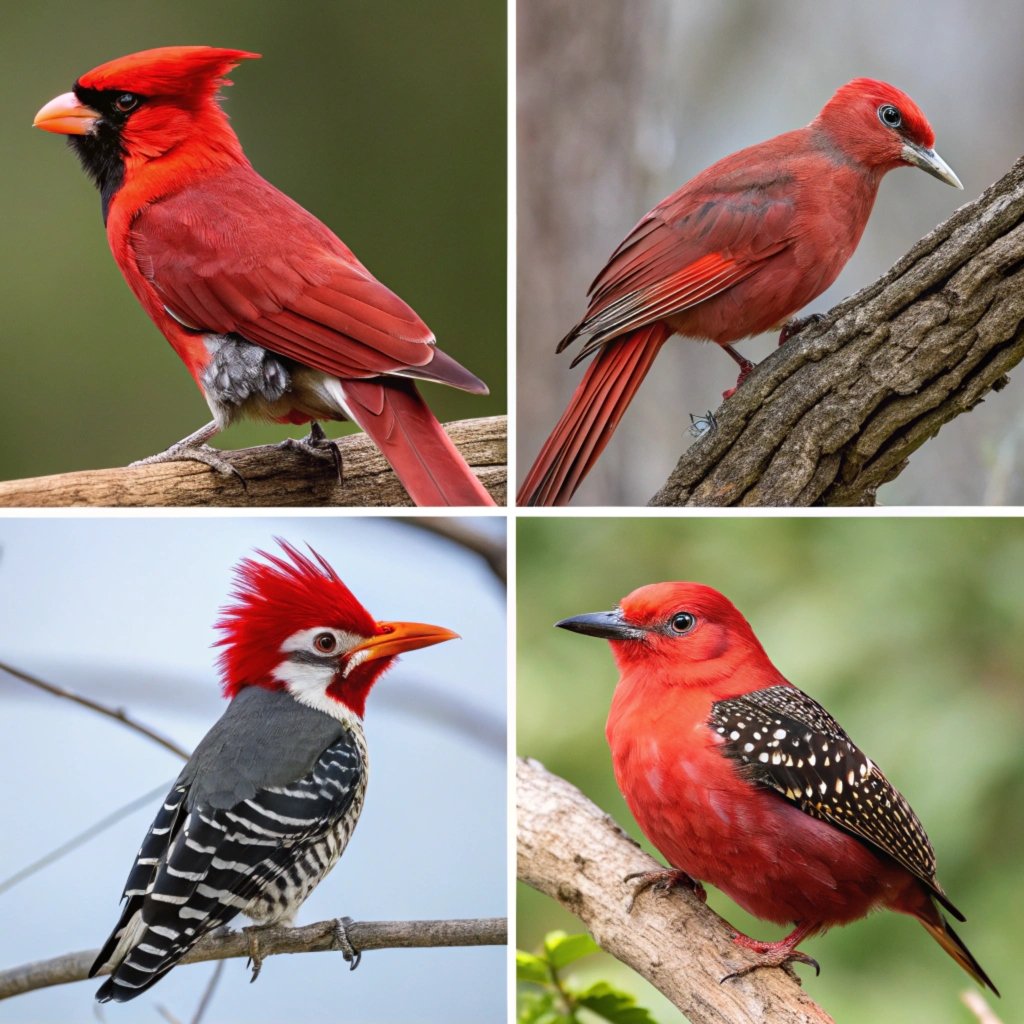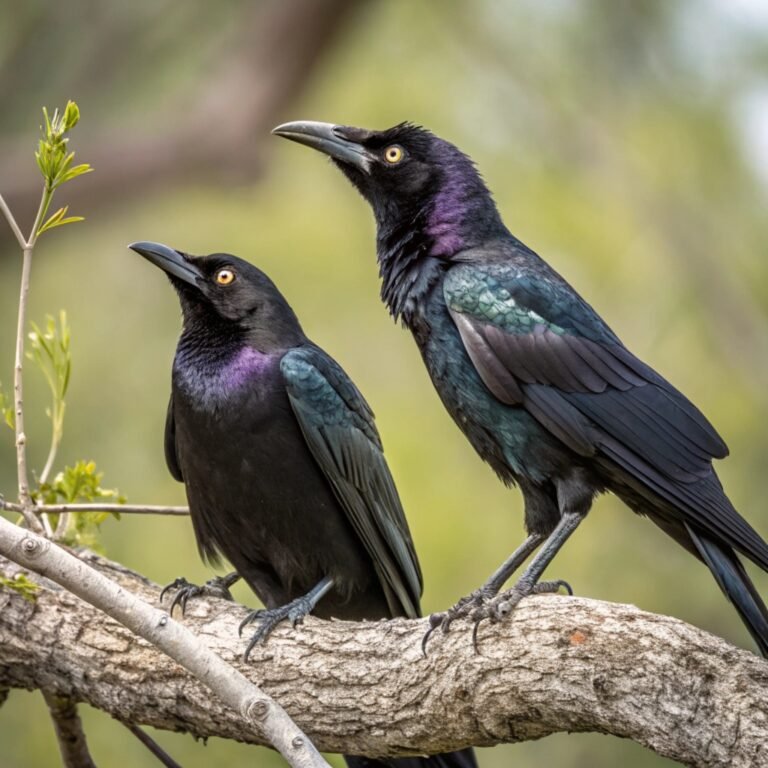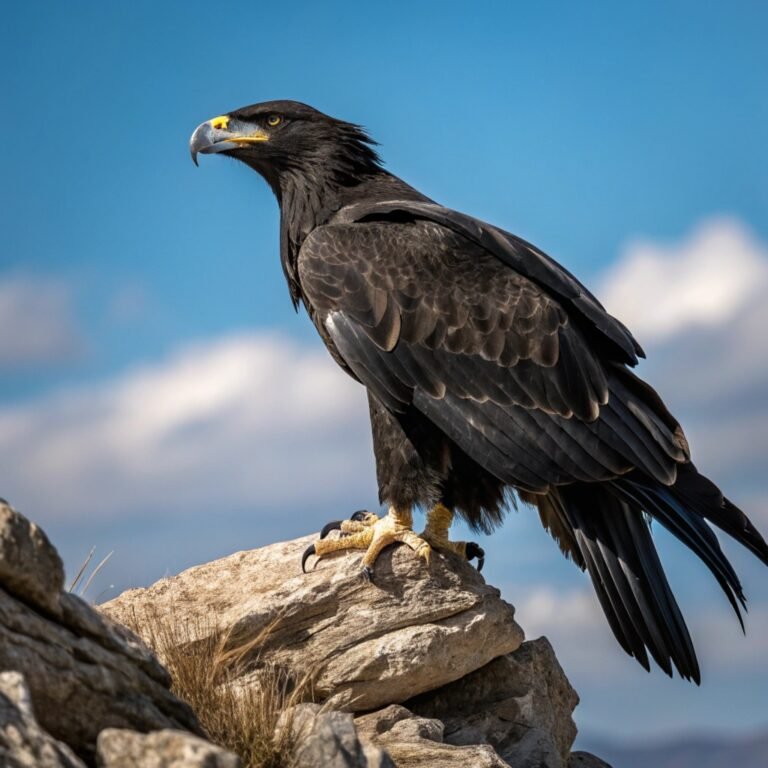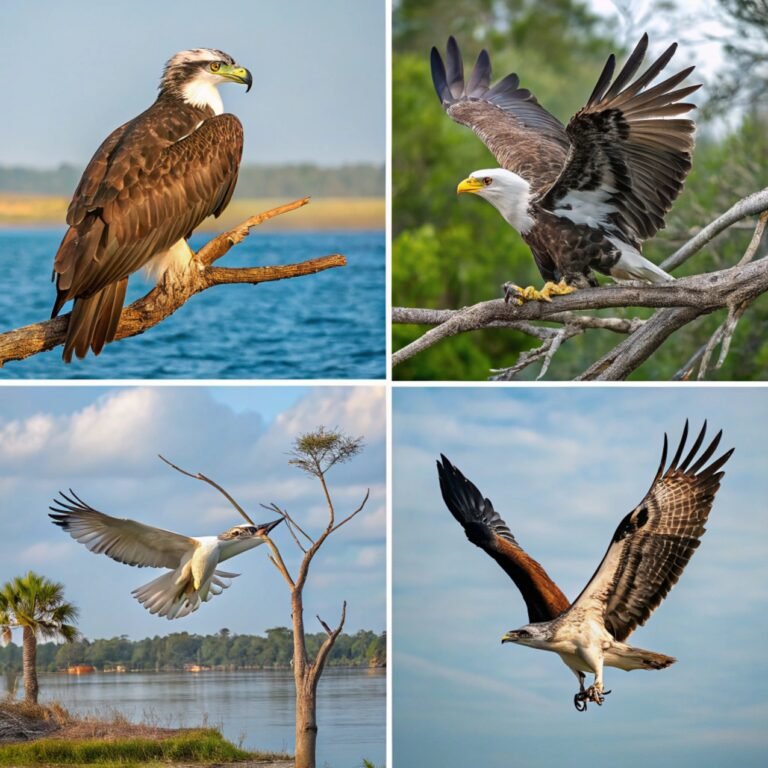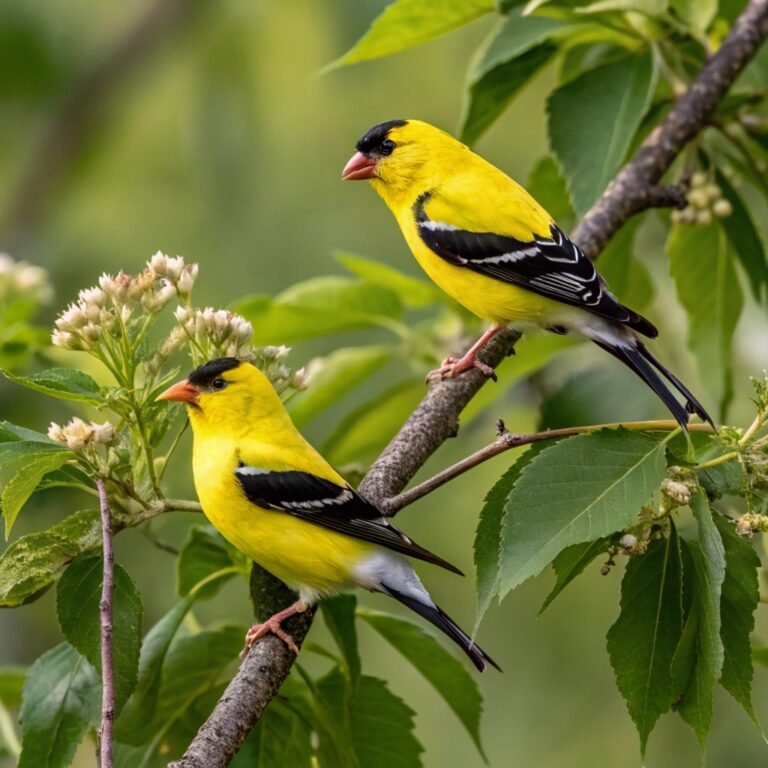10 Stunning Birds with Red Heads – A Unique Collection of Nature’s Colorful Avian Wonders
Birds with red heads are some of the most striking and easily recognizable creatures in the avian world.
Their vibrant plumage adds a splash of color to any landscape, making them a favorite among birdwatchers and nature enthusiasts alike.
In this comprehensive guide, we’ll explore ten remarkable species that sport crimson crowns, delving into their unique characteristics, habitats, and behaviors.
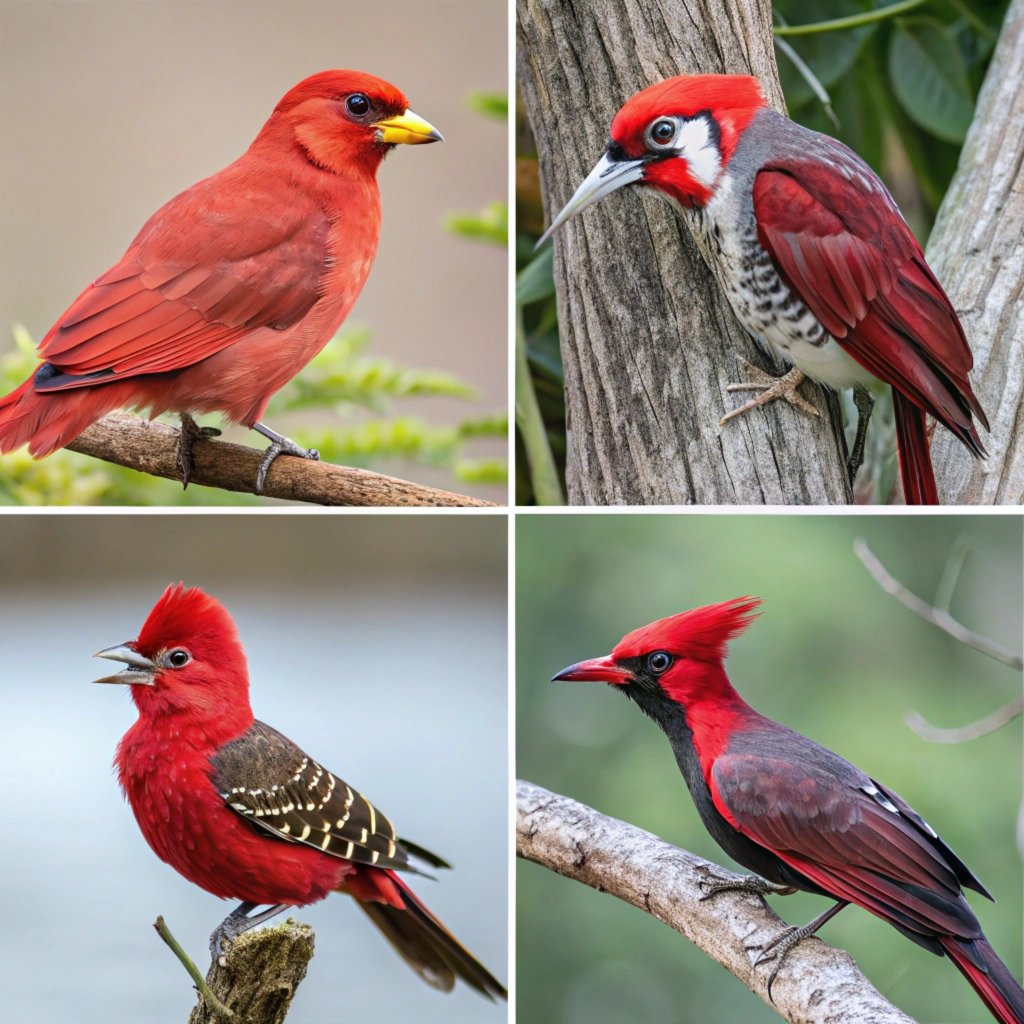
Key Takeaways:
- Red-headed birds are found across various habitats, from forests to urban areas.
- Many species with red heads belong to the woodpecker family.
- Some red-headed birds are year-round residents, while others are migratory.
- The intensity and coverage of red coloration can vary between males and females in certain species.
- Red plumage often plays a crucial role in courtship displays and territorial behaviors.
- Several red-headed bird species are adaptable to human-altered environments.
- Conservation efforts are essential for protecting some of these colorful avian species.
- Birdwatchers and photographers often seek out these visually striking birds.
- The red coloration in birds is typically due to carotenoid pigments in their diet.
- Some red-headed birds have additional distinctive features, such as crests or unique vocalizations.
The Charismatic Red-headed Woodpecker: A True Scarlet-Crowned Beauty
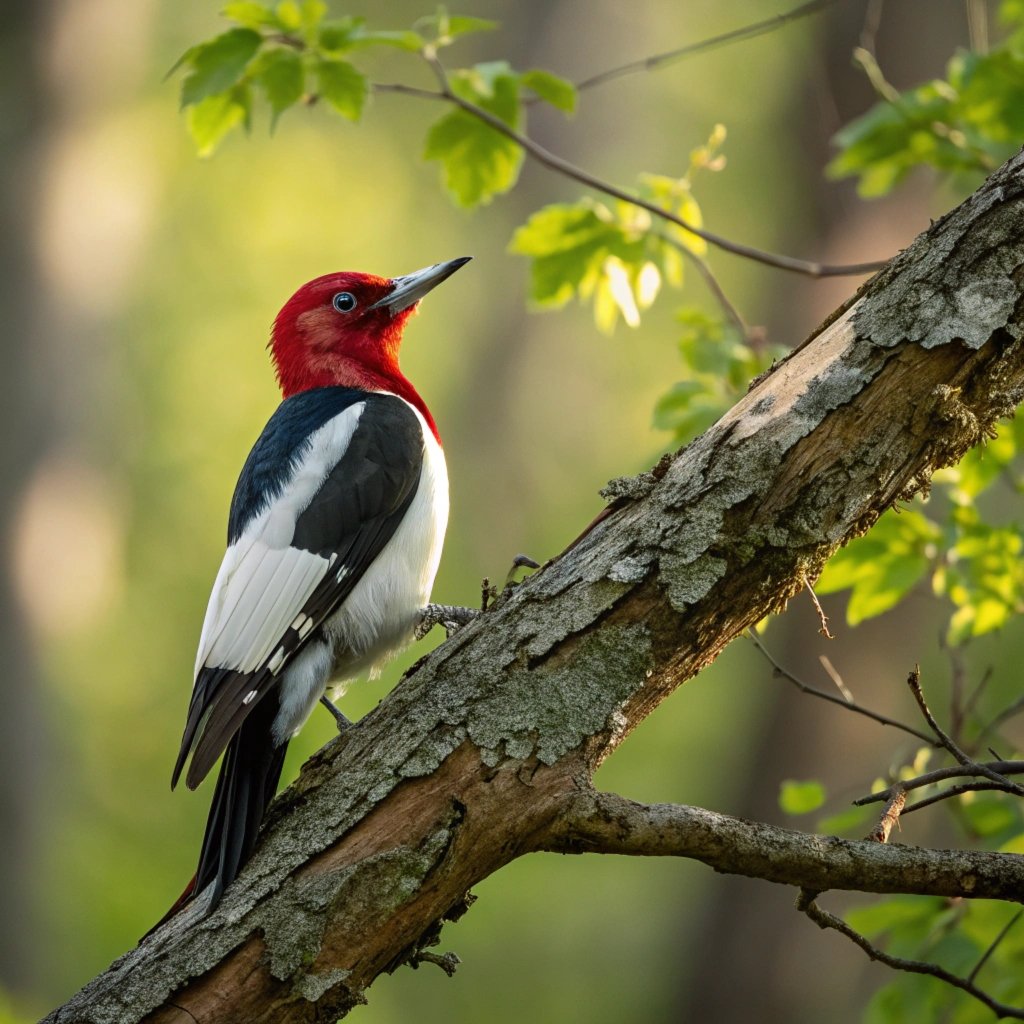
The Red-headed Woodpecker (Melanerpes erythrocephalus) is arguably the most iconic of all red-headed birds.
This medium-sized woodpecker boasts a striking appearance with its entire head covered in deep, velvet red plumage.
The contrast between its crimson head and the stark black and white pattern of its body makes it a true standout in the avian world.
Found in open woodlands and park-like habitats across eastern North America, the Red-headed Woodpecker is known for its acrobatic flying skills and its habit of catching insects mid-air.
These birds are also adept at storing food, often caching acorns and other nuts in tree crevices for later consumption. Unfortunately, their populations have declined in recent years due to habitat loss, making conservation efforts crucial for their survival.
The Regal Northern Cardinal: A Backyard Favorite
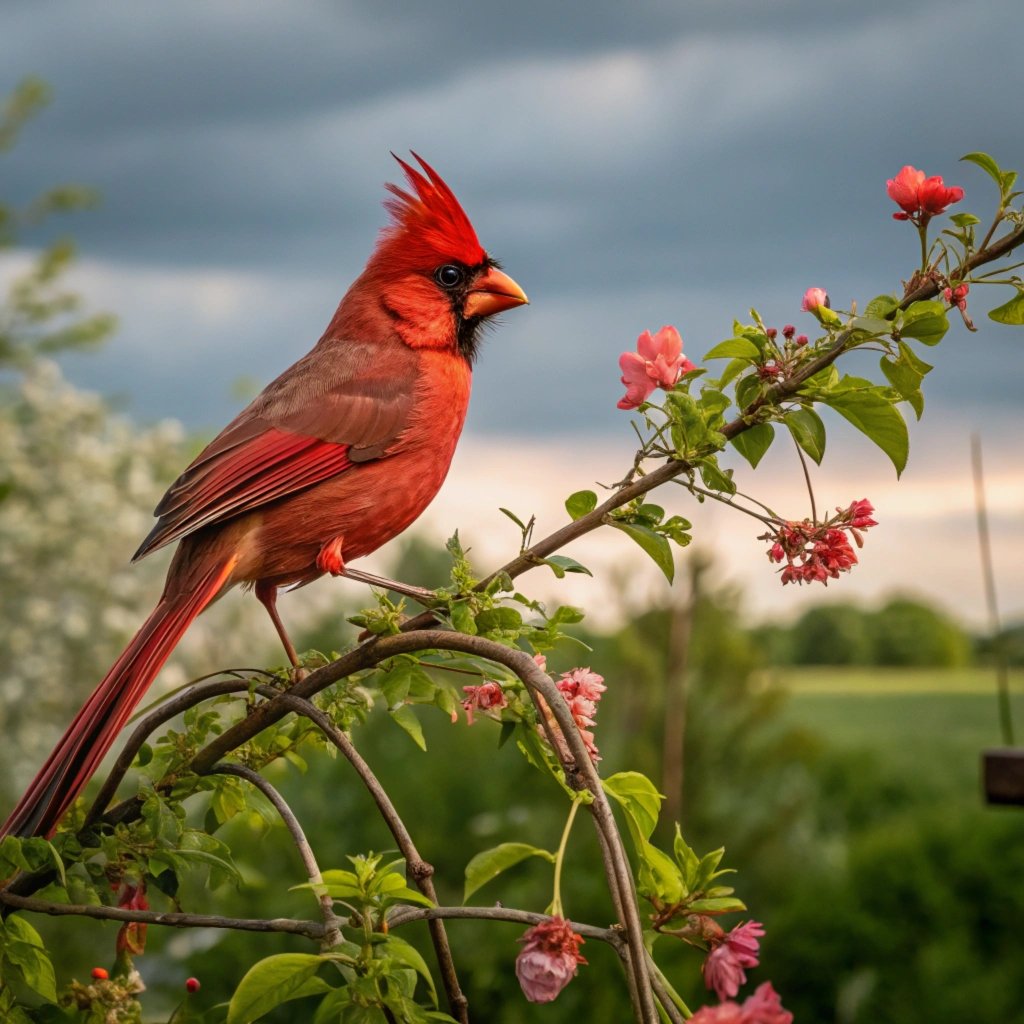
The Northern Cardinal (Cardinalis cardinalis) is a beloved sight in many North American backyards.
The male of this species is unmistakable with its bright red plumage covering not just the head but the entire body. Females, while less vibrant, still sport an attractive reddish crest and warm brown coloration.
These year-round residents are known for their beautiful songs and are often seen at bird feeders. Cardinals are monogamous and maintain strong pair bonds, with males often feeding seeds to females during courtship.
Their adaptability to various habitats, including urban and suburban areas, has helped them maintain stable populations across their range.
The Fiery Vermilion Flycatcher: A Southwestern Gem
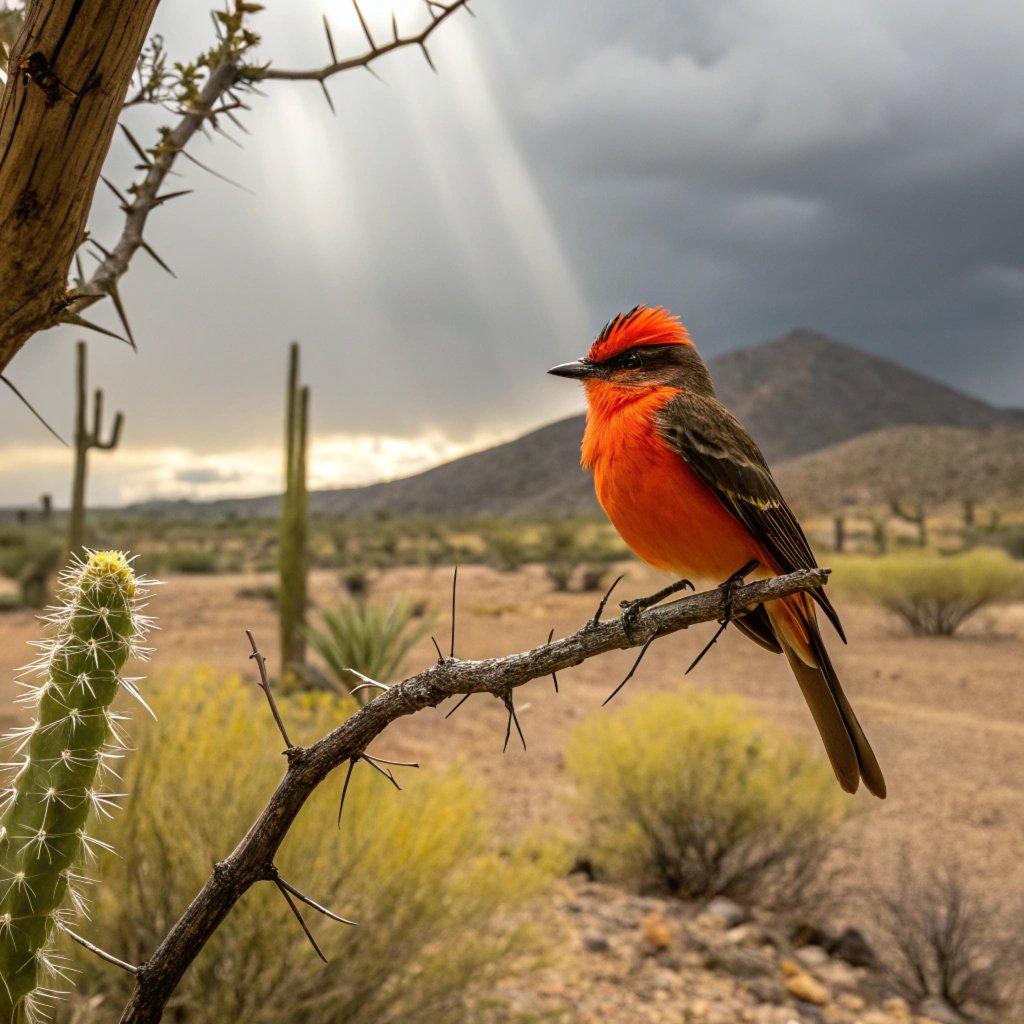
The Vermilion Flycatcher (Pyrocephalus rubinus) is a small but spectacularly colored bird found in the southwestern United States and parts of South America.
Male Vermilion Flycatchers have a brilliant scarlet head and breast, contrasting sharply with their dark brown wings and tail.
These insectivorous birds are often seen perched on low branches or fences, making short flights to catch flying insects. Their vibrant appearance is matched by their bold behavior, as males perform elaborate aerial displays to attract mates.
The Vermilion Flycatcher’s preference for open habitats near water makes them a striking sight in desert and riparian areas.
The Distinctive Red-crested Cardinal: An Exotic Beauty
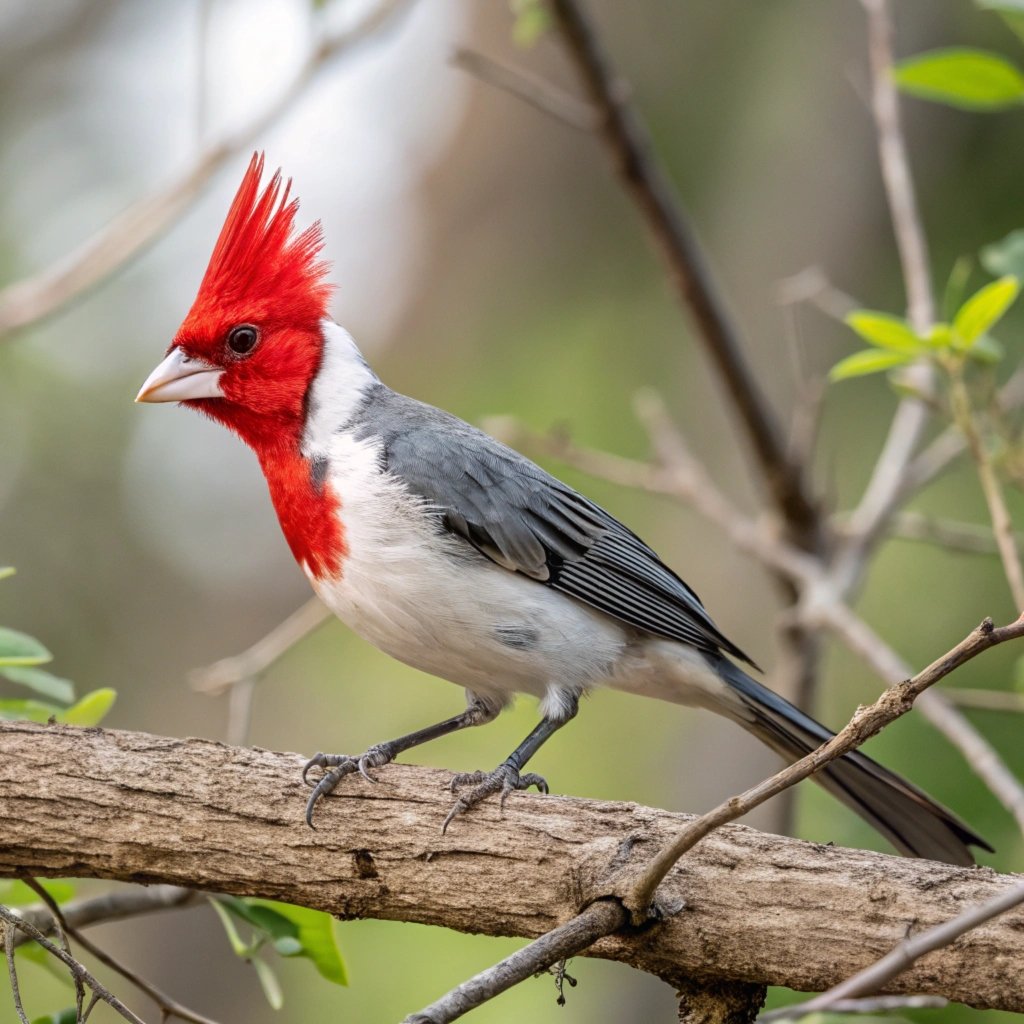
Despite its name, the Red-crested Cardinal (Paroaria coronata) is not closely related to true cardinals.
This South American native has been introduced to Hawaii and other parts of the world. Its most striking feature is the tall, bright red crest that adorns its head, contrasting beautifully with its gray body and white underparts.
These social birds are often seen in small flocks, foraging on the ground for seeds and insects. In their introduced ranges, they have adapted well to urban environments, becoming a common sight in parks and gardens.
Their cheerful songs and striking appearance have made them popular among bird enthusiasts in their new habitats.
The Elegant Scarlet Tanager: A Forest Jewel
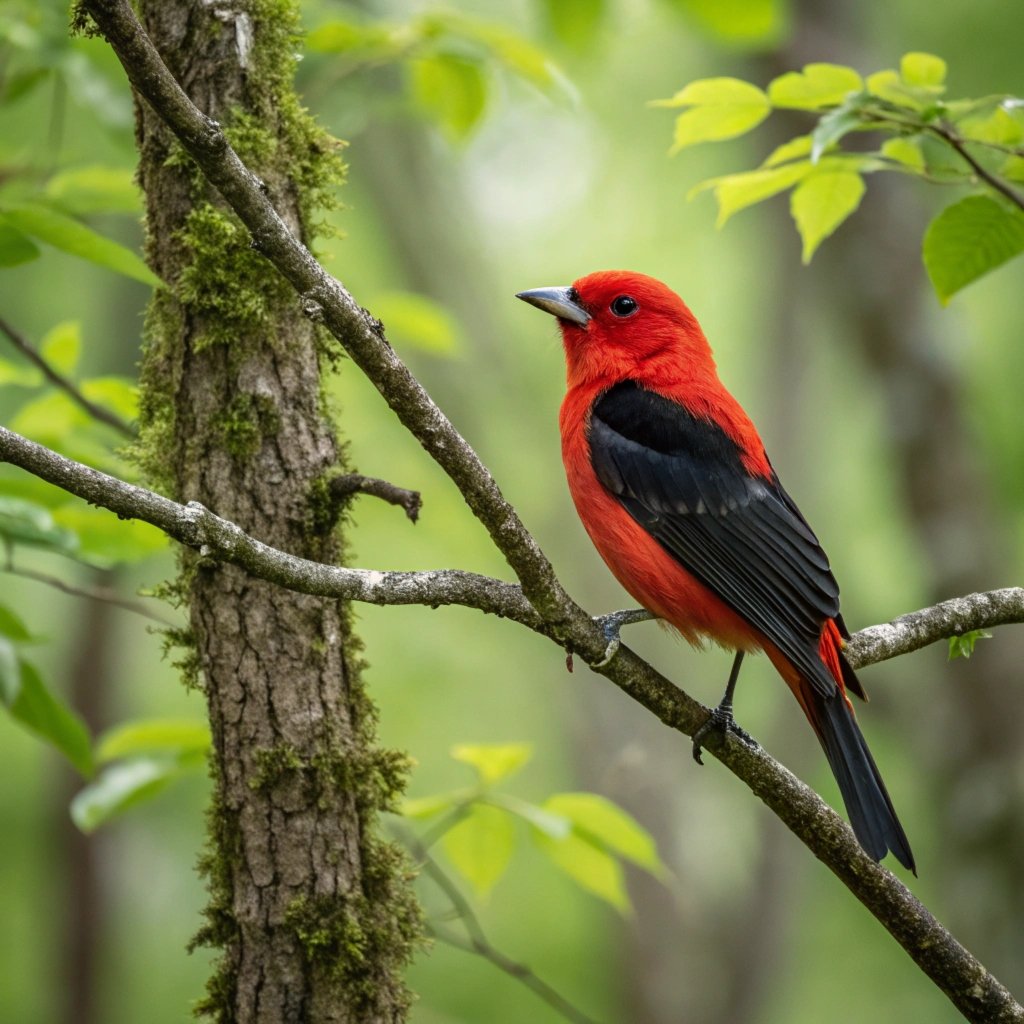
The Scarlet Tanager (Piranga olivacea) is a breathtaking sight in the deciduous forests of eastern North America.
Male Scarlet Tanagers are a brilliant red all over, with contrasting black wings and tail. Females and winter males are a more subdued olive-green, providing excellent camouflage among the foliage.
These migratory birds spend their breeding season in North America before heading to South America for the winter.
Despite their bright coloration, Scarlet Tanagers can be challenging to spot as they often forage high in the forest canopy.
Their presence is often revealed by their distinctive chick-burr call echoing through the woods.
The Robust Pileated Woodpecker: A Prehistoric-Looking Giant

The Pileated Woodpecker (Dryocopus pileatus) is the largest woodpecker in North America, with a size rivaling that of a crow.
While not entirely red-headed, its most distinctive feature is the bright red crest that adorns both males and females. The male also sports a red “mustache” stripe, adding to its striking appearance.
These impressive birds are known for their loud drumming and their large, rectangular excavations in trees as they search for their primary food source: carpenter ants.
Pileated Woodpeckers play a crucial role in forest ecosystems, creating nesting sites for other cavity-nesting species. Their presence is often an indicator of mature, healthy forests.
The Vibrant Red-breasted Sapsucker: A Western Wonder
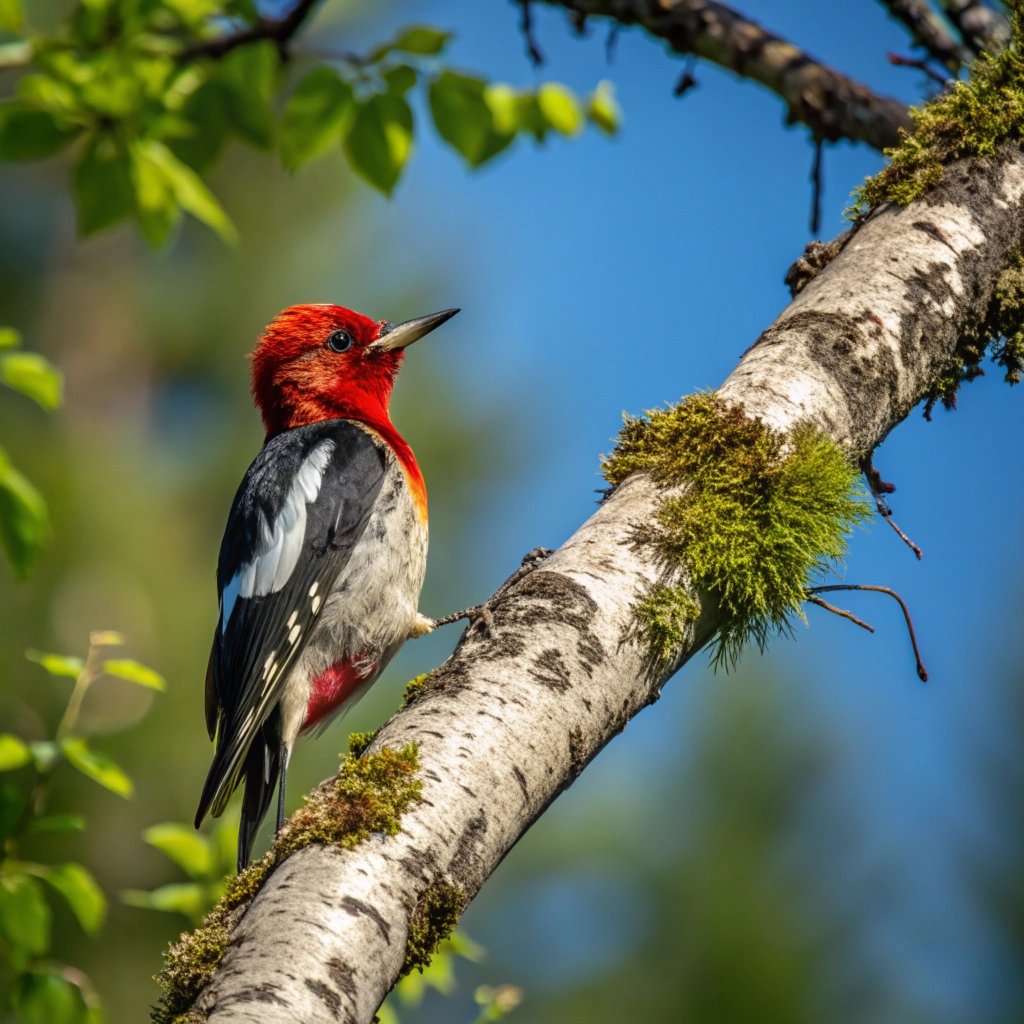
The Red-breasted Sapsucker (Sphyrapicus ruber) is a medium-sized woodpecker found in the forests of the Pacific Northwest. As its name suggests, it has a bright red head and breast, with a mottled black and white back.
These birds are known for their unique feeding habit of drilling neat rows of holes in tree bark to feed on the sap and insects attracted to it.
Red-breasted Sapsuckers play an important role in their ecosystem, as their sap wells provide food for other species, including hummingbirds.
Their distinctive drumming patterns and cat-like mewing calls make them easily identifiable in their forest habitats. Conservation of old-growth and mature forests is crucial for the continued success of this species.
The Charming House Finch: An Adaptable Urban Dweller
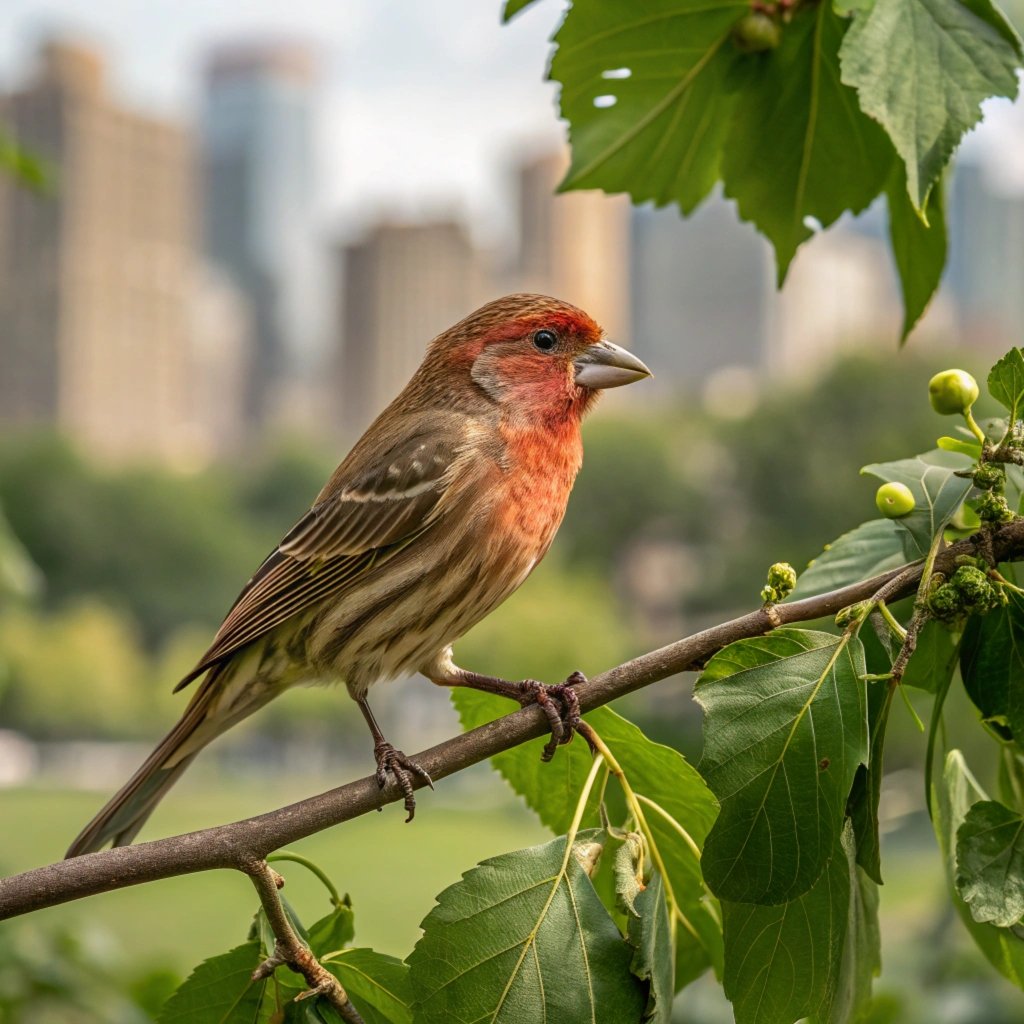
The House Finch (Haemorhous mexicanus) is a common sight in many North American towns and cities. While not exclusively red-headed, male House Finches sport varying shades of red on their heads, breasts, and rumps.
The intensity of the red coloration can vary based on diet, with birds eating more carotenoid-rich foods developing brighter plumage.
These adaptable birds have successfully colonized urban and suburban areas across the continent. Their cheerful, warbling songs are a familiar sound in many neighborhoods.
House Finches are frequent visitors to bird feeders, particularly those offering sunflower seeds.
Their ability to thrive in human-altered environments has made them one of the most widespread and successful bird species in North America.
The Exotic Red-crested Turaco: An African Forest Gem
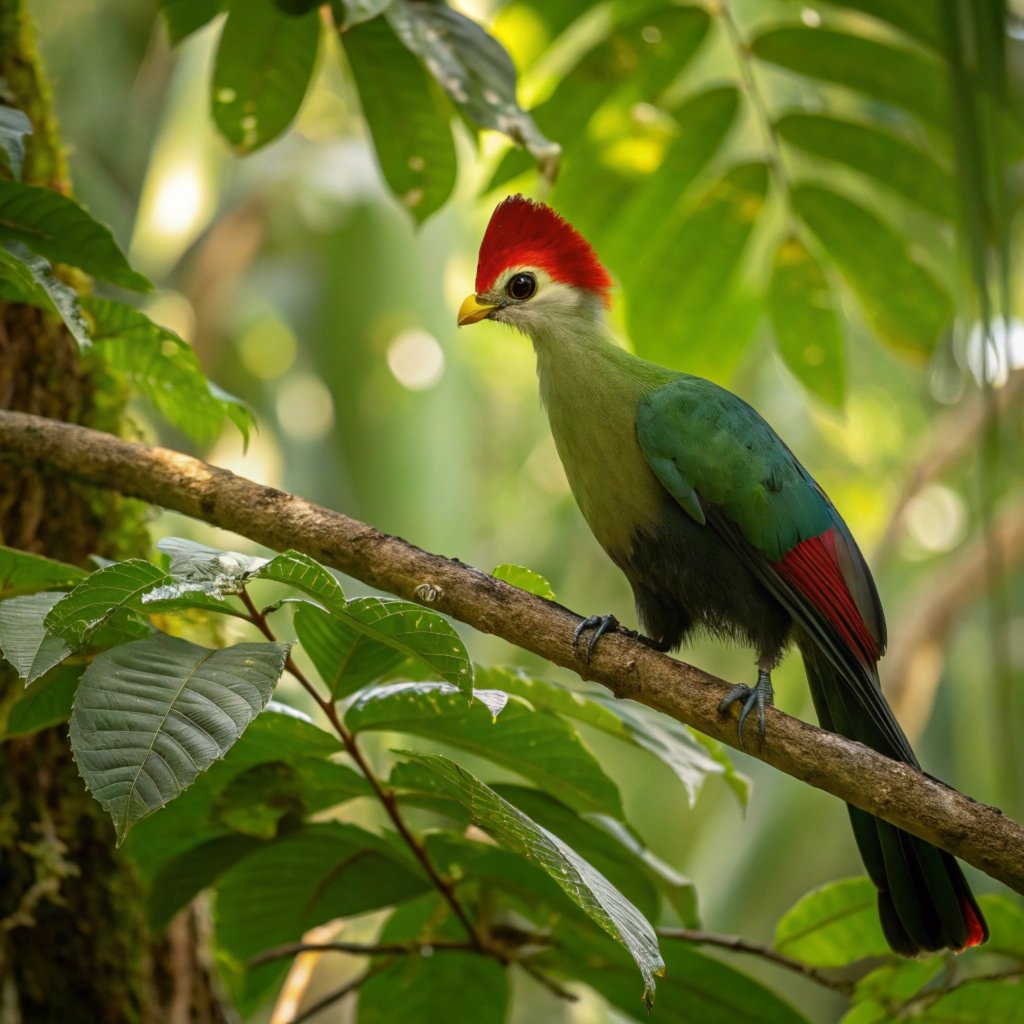
While not native to North America, the Red-crested Turaco (Tauraco erythrolophus) deserves mention for its spectacular red crest.
This African species is found in the forests of Angola and is known for its striking appearance. The bright red crest is complemented by a green body, white-lined eyes, and a colorful beak.
Red-crested Turacos are arboreal fruit-eaters and play an important role in seed dispersal within their forest habitats.
Their unique vocalizations, which include loud crow-like calls, add to the soundscape of African forests.
While not commonly seen outside their native range, these birds are sometimes kept in zoos and aviaries, where their vibrant plumage never fails to captivate visitors.
The Distinctive Red-faced Warbler: A Montane Specialist

The Red-faced Warbler (Cardellina rubrifrons) is a small but striking bird found in the montane forests of the southwestern United States and Mexico.
As its name suggests, it has a bright red face that contrasts sharply with its gray body and white underparts. This unique coloration makes it one of the most easily identifiable warblers in its range.
These active birds are often seen flitting through the canopy of pine-oak forests, searching for insects. Their high-pitched songs add to the chorus of mountain bird communities.
Red-faced Warblers are migratory, spending winters in Mexico and Central America. Conservation of their breeding habitats in mountain forests is crucial for the continued success of this colorful species.
Frequently Asked Questions
What causes the red coloration in birds’ feathers?
The red pigmentation in birds’ feathers is primarily due to carotenoid pigments obtained from their diet. Birds cannot produce these pigments themselves, so they must consume foods rich in carotenoids, such as certain fruits and insects, to develop and maintain their vibrant red plumage.
Are all woodpeckers red-headed?
No, not all woodpeckers have red heads. While many woodpecker species do have some red on their heads, the extent and placement of the red coloration vary greatly among species. Some woodpeckers, like the Downy Woodpecker, only have a small red patch on the back of their head, while others, like the Red-headed Woodpecker, have entirely red heads.
Do female birds also have red heads?
In many species with red-headed males, females may have less intense or no red coloration. For example, female Northern Cardinals are primarily brown with some reddish tinges. However, in some species like the Pileated Woodpecker, both males and females have red crests.
Are birds with red heads more aggressive?
While red coloration is often associated with aggression in the animal kingdom, this is not necessarily true for all red-headed bird species. However, bright colors can play a role in territorial displays and mate attraction, which may involve aggressive behaviors in some species.
How can I attract red-headed birds to my backyard?
To attract red-headed birds, provide a variety of food sources such as sunflower seeds, suet, and fruit. Creating a bird-friendly habitat with native plants, water sources, and nesting sites can also help. Different species have different preferences, so research the specific needs of the red-headed birds in your area.

Hello, I’m Emily Price, the founder of Birds Affection. As a passionate bird enthusiast and spiritual seeker, I’ve always been fascinated by the symbolic meanings and mystical connections between birds and our lives. On this website, I share my knowledge and insights on the spiritual significance of various bird species, exploring their roles as messengers, guides, and teachers. Through my writing, I aim to inspire and educate others on the profound wisdom and beauty that birds bring to our world. Join me on this journey as we delve into the enchanting realm of bird symbolism and discover the hidden meanings behind these magnificent creatures.

